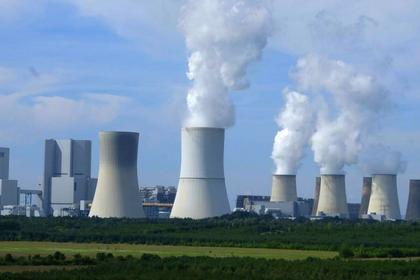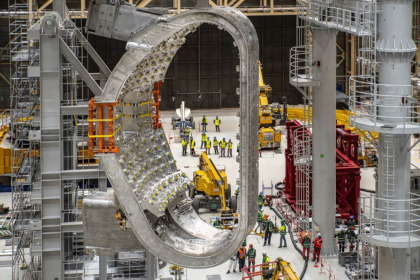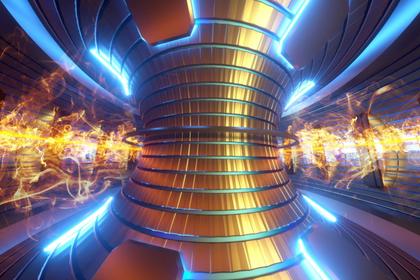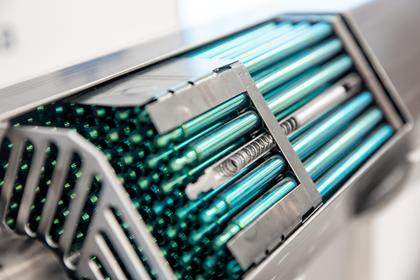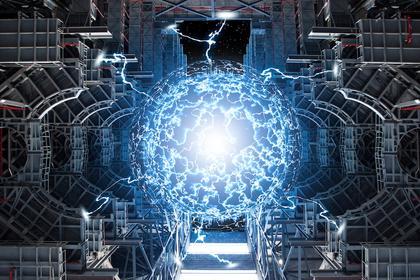
U.S. FUSION ENERGY
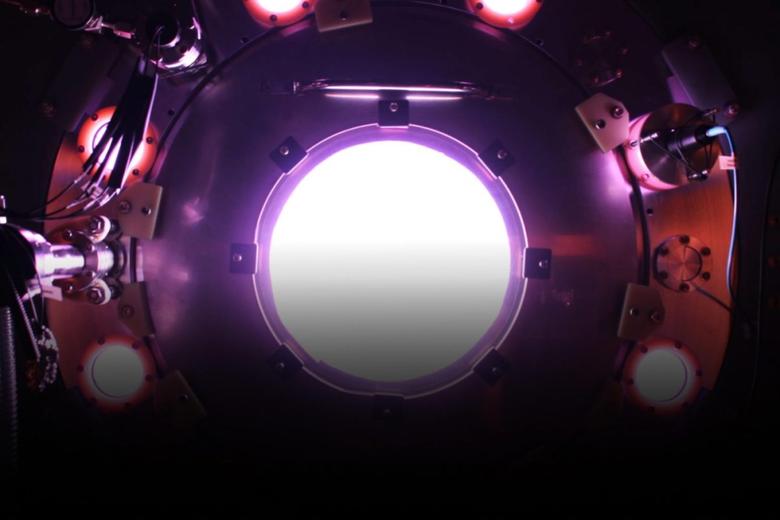
WNN - 29 July 2021 - Fusion energy developer Helion Energy has broken ground on a new facility in Everett, Washington, which will house its seventh generation fusion prototype, known as Polaris. Construction of the facility, which will also produce helium-3 fuel, is expected to be completed in early-2022. Meanwhile, General Fusion and Canadian Nuclear Laboratories are to collaborate on the development of tritium extraction techniques for use in commercial fusion power plants.
Helion said the new facility in Everett will accelerate its efforts to build the world's first commercially-viable fusion power plant. It is developing a cost-effective, zero-carbon electrical power plant using its patented pulsed, non-ignition fusion technology. Helion says its fusion power plant will provide "flexible, scalable, baseload power that is affordable, providing the world a new path to full decarbonisation of electricity generation".
"At this facility, Helion will close in on its goal of breaking the fusion barrier and pushing the world towards the end of the fossil fuel era," said Helion founder and CEO David Kirtley. "Helion has deep roots in Washington, having spent the last eight-plus years here researching and developing a technology with unparalleled implications for reshaping how the world obtains its energy."
"Washington is proud to be the home of world-leading pioneers developing affordable, clean energy solutions," said Governor Jay Inslee, who attended the ground-breaking ceremony on 27 July. "It's a great milestone that Helion is now ready to commercialise their innovative technology. With this new facility, Helion and Washington are taking game-changing action to address the climate crisis."
Helion says its approach to fusion energy differs in three main ways from other approaches. Firstly, it uses a pulsed fusion system, which helps overcome the hardest physics challenges, keeps its fusion device smaller than other approaches, and allows it to adjust the power output based on need. Secondly, its system is built to directly recover electricity, while other fusion systems heat water to create steam to turn a turbine which loses a lot of energy in the process. Thirdly, it uses deuterium and helium-3 as fuel, which helps keep its system small and efficient.
Last month, Helion became the first private company to announce exceeding 100 million degrees Celsius in its sixth fusion generator prototype, Trenta. The company said reaching this temperature is a critical engineering milestone as it is considered the ideal fuel temperature at which a commercial power plant would need to operate. It also announced its Trenta prototype recently finished a 16-month testing campaign, completing almost 10,000 high-power pulses.
Tritium extraction
General Fusion's Magnetised Target Fusion (MTF) approach to fusion involves injecting hydrogen plasma into a liquid metal sphere, where it is compressed and heated so that fusion occurs. The heat from the fusion of the hydrogen atoms is transferred into the liquid metal.
The Vancouver, Canada-based company plans to demonstrate its MTF technology with its Fusion Demonstration Plant (FDP), to be built at UKAEA's Culham Campus near Oxford in the UK. The FDP - a 70%-scaled version of the commercial pilot plant - is expected to begin operations in 2025.
The demonstration plant will create fusion conditions in a "power-plant relevant" environment but will not be used to produce power. The FDP will cycle one plasma pulse per day, and will used deuterium fuel, whereas the commercial pilot plant will use deuterium-tritium fuel and will cycle up to one plasma pulse per second. The neutrons in the reactor interact with the liquid metal liner of the fusion vessel generating more tritium.
General Fusion has announced it will work with Canadian Nuclear Laboratories (CNL) to identify the most promising approaches for managing tritium in fusion energy systems - specifically, the process of extracting tritium from liquid metal to provide a limitless supply of tritium fuel for use in fusion power plants.
This work will be carried out through the Canadian Nuclear Research Initiative, a programme that facilitates access to CNL's facilities for industrial partners in Canada and around the world. CNL has a CAD40 million state-of-the-art tritium facility capable of handling the materials required to conduct full-scale tests of tritium extraction technology.
"Our global research partners play an important role in helping General Fusion advance its MTF technology for commercialisation," said Ryan Guerrero, chief technology officer at General Fusion. "This collaboration with Canadian Nuclear Laboratories will further refine this technology for application in commercial power plants."
General Fusion says its approach of maximising the use of existing industrial technologies such as pneumatic pistons, and not relying on large, superconducting magnets or expensive lasers means a more readily available supply chain, making MTF easier to manufacture and scale than other fusion technologies. The company says its goal is to bring fusion energy to the world by the early 2030s.
-----
Earlier:

